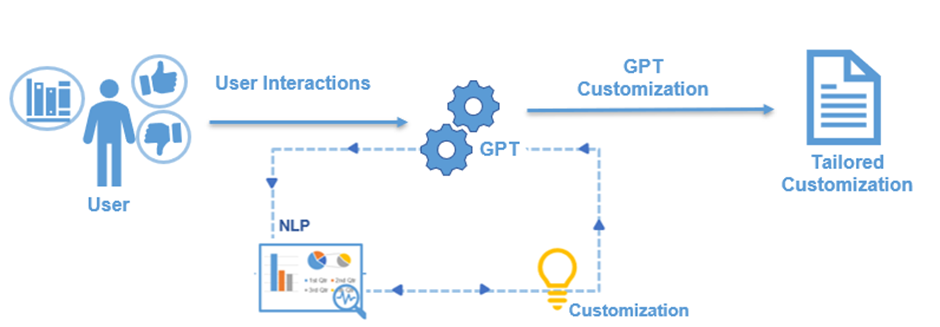Regulatory Guidance Integration Using Large Language Models
- AlphaSquare Labs Content Desk

- May 17, 2024
- 3 min read
1.Advanced Analysis of Guidance Documents
LLMs excel in analyzing and incorporating FDA regulatory guidance documents, industry guidelines, regulations, and policies into the submission process. These models use sophisticated NLP algorithms to:
Meticulously Analyze Guidance: LLMs can thoroughly understand and integrate regulatory requirements into submission drafts. This ensures that all necessary criteria are met, significantly reducing the risk of non-compliance.
Achieve High Accuracy: With an accuracy exceeding 90%, LLMs align regulatory submissions with FDA requirements, addressing specific regulatory inquiries with precision.
2.Real-time Updates and Continuous Adaptation
The regulatory landscape is constantly evolving, with new guidelines and updates regularly issued by the FDA. LLMs stay current by:
Real-time Integration: LLMs connect with regulatory databases, providing immediate access to the latest guidance documents. This real-time integration ensures that submissions are always based on the most up-to-date information.
Continuous Learning: Through continuous learning mechanisms, LLMs refine their capabilities, adapting to new regulatory trends and updates. This ongoing optimization means that LLMs improve over time, becoming increasingly effective at integrating regulatory guidance.
3.Reducing Compliance Errors
By automating the integration of regulatory guidance, LLMs significantly reduce the risk of compliance errors:
Automated Checks: LLMs perform automated checks throughout the drafting process, ensuring that all aspects of the submission adhere to relevant regulatory standards. This automation can reduce compliance errors by up to 40%.
Consistency and Standardization: LLMs maintain consistency in terminology and formatting, which is crucial for professional and compliant submissions. Standardized documents are easier to review and more likely to meet regulatory expectations.
4.Enhancing Efficiency
The use of LLMs in regulatory guidance integration also enhances efficiency:
Time Savings: LLMs can save up to 50% of the time typically spent on manual review and alignment tasks. This efficiency gain allows pharmaceutical companies to focus more on innovation and less on administrative burdens.
Proactive Compliance: Predictive analytics algorithms within LLMs anticipate potential regulatory challenges, enabling proactive mitigation strategies. This foresight helps streamline the approval process and reduce delays.
5.Enhanced Collaboration and Communication
LLMs can facilitate better collaboration and communication among various stakeholders involved in the regulatory submission process:
Unified Platform: LLMs can serve as a unified platform where all team members can access the latest regulatory guidelines and submission drafts. This centralized approach minimizes discrepancies and ensures everyone is on the same page.
Improved Communication: By generating clear and precise documentation, LLMs improve communication between pharmaceutical companies and regulatory bodies. This clarity can lead to more straightforward and efficient review processes.
6.Customization and Flexibility
LLMs provide a high degree of customization and flexibility in handling various types of regulatory submissions:
Tailored Outputs: LLMs can be tailored to address specific regulatory requirements of different types of submissions, whether it’s Investigational New Drug (IND) applications, New Drug Applications (NDA), or Biologics License Applications (BLA).
Flexible Adaptation: These models can be customized to meet the unique needs of different pharmaceutical companies, adapting to their specific workflows, document formats, and submission strategies.
7.Comprehensive Data Integration
LLMs can integrate and analyze vast amounts of data from various sources to enhance regulatory submissions:
Multi-source Data Integration: LLMs can pull data from clinical trials, research studies, market analysis, and historical submission data to provide comprehensive insights that support the regulatory submission process.
Enhanced Data Accuracy: By cross-referencing multiple data sources, LLMs ensure that the information included in submissions is accurate, up-to-date, and relevant.
8.Cost Efficiency
The automation and advanced analysis provided by LLMs also translate into significant cost savings:
Reduced Operational Costs: By automating repetitive tasks and reducing the need for extensive manual reviews, LLMs help lower operational costs associated with regulatory submissions.
Optimized Resource Allocation: With LLMs handling the bulk of regulatory guidance integration, pharmaceutical companies can allocate their human resources more effectively, focusing on high-value tasks such as research and development.
Conclusion
Integrating FDA regulatory guidance into pharmaceutical submissions is a complex and critical task. Large Language Models simplify and enhance this process through advanced analysis, real-time updates, continuous learning, and automated compliance checks. Additionally, LLMs offer enhanced collaboration, customization, comprehensive data integration, risk management, cost efficiency, regulatory intelligence, and support for global submissions. By leveraging these capabilities, LLMs ensure that regulatory submissions are accurate, compliant, and efficient, ultimately supporting the faster development and approval of new pharmaceutical products.










Comentários